Just recently, James Bullard, President of the St. Louis Federal Reserve, suggested the central bank might need to employ the “7% solution” -- meaning raising rates to 7% to ensure the complete destruction of inflation. As we have discussed previously, the fear is repeating the policy errors of the late 1970s that led to entrenched inflation.
While the “7% solution” is supported by the likes of Larry Summers and others, there are vast differences between the economy today versus then. Trying to increase the Fed funds rate to 7%, 2.5% higher than they are currently, risks triggering a catastrophically deep recession.
The reason is the 2020 inflation was the result of one-time artificial influences versus the 1970s. As we noted previously in “That 70s Show:”
“The buildup of inflation was in the works long before the Arab Oil Embargo. Economic growth, wages, and savings rates catalyzed ‘demand push’ inflation. In other words, as economic growth increased, economic demand led to higher prices and wages.”
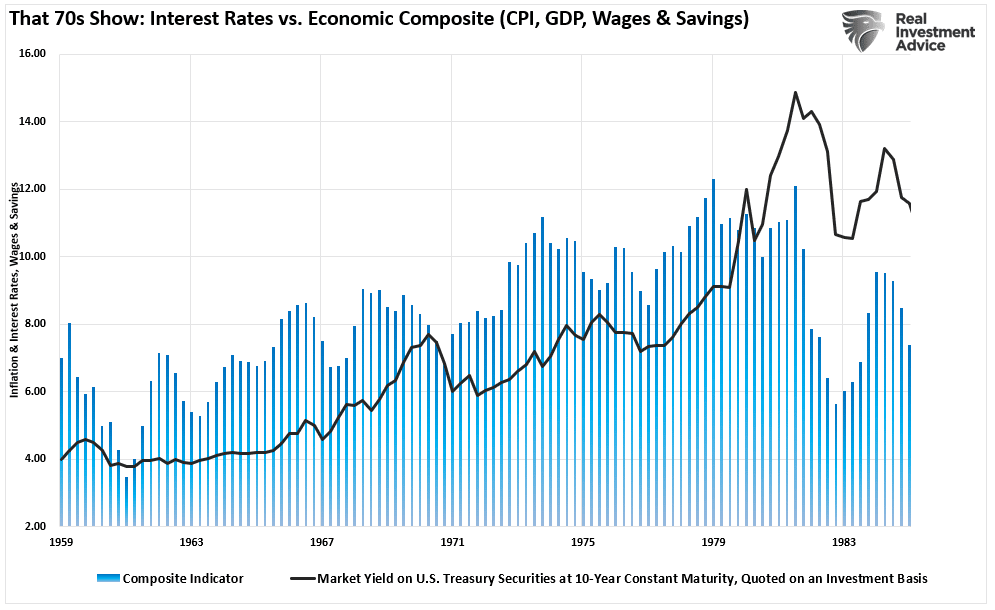
“Furthermore, the Government ran no deficit, and household debt to net worth was about 60%. So, while inflation was increasing and interest rates rose in tandem, the average household could sustain their living standard. The chart shows the difference between household debt versus incomes in the pre-and post-financialization eras.”

What was most notable is the Fed’s inflation fight didn’t start in 1980 but persisted through the entirety of the 60s and 70s. As shown, as economic growth expanded, increasing wages and savings, the entire period was marked by inflation surges. Repeatedly, the Fed took action to slow inflationary pressures, which resulted in repeated market and economic downturns.
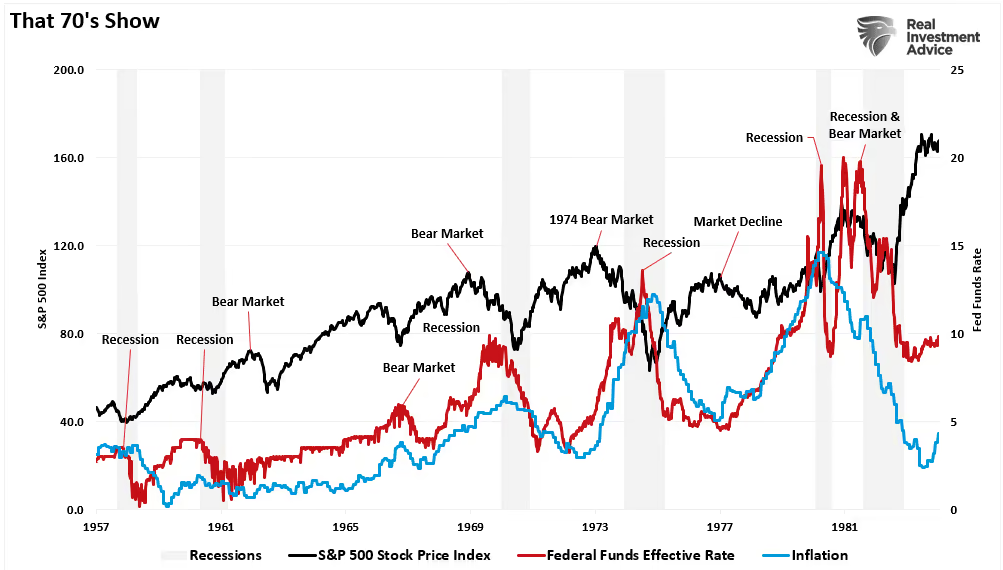
The enormous debt load is the most crucial difference between applying the “7% solution” today and in the 70s. Today, consumers, businesses, and even the Government depend on low-interest debt to sustain an ongoing spending spree.
A “7% solution” could pop the massive “debt bubble,” leading to severe economic consequences.
The Debt Problem
The massive debt levels provide the single most significant risk and challenge to the Federal Reserve. It is also why the Fed is desperate to return inflation to low levels, even if it means weaker economic growth. Jerome Powell recently stated the same.
“We need to act now, forthrightly, strongly as we have been doing. It is very important that inflation expectations remain anchored. What we hope to achieve is a period of growth below trend.”
That last sentence is the most important.
There are some important financial implications for below-trend economic growth. As we discussed in “The Coming Reversion To The Mean Of Economic Growth:”
“After the ‘Financial Crisis,’ the media buzzword became the ‘New Normal’ for what the post-crisis economy would like. It was a period of slower economic growth, weaker wages, and a decade of monetary interventions to keep the economy from slipping back into a recession.
Post the ‘Covid Crisis,’ we will begin to discuss the ‘New New Normal’ of continued stagnant wage growth, a weaker economy, and an ever-widening wealth gap. Social unrest is a direct byproduct of this “New New Normal,” as injustices between the rich and poor become increasingly evident.
If we are correct in assuming that PCE will revert to the mean as stimulus fades from the economy, then the ‘New New Normal’ of economic growth will be a new lower trend that fails to create widespread prosperity.”
As shown, economic growth trends are already falling short of both previous long-term growth trends. The Fed is now talking about slowing economic activity further in its inflation fight.
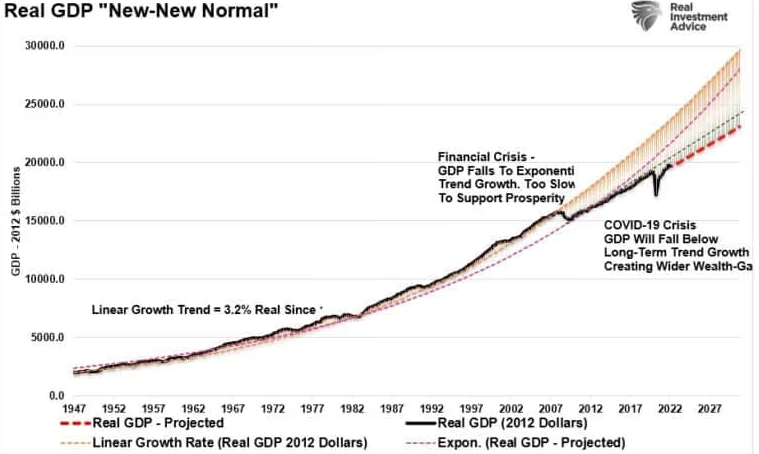
The reason that slowing economic growth, and killing inflation, is critical for the Fed is due to the massive amount of leverage in the economy. The chart below shows the total economic system leverage versus GDP. It currently requires $4.82 of debt for each dollar of inflation-adjusted economic growth.
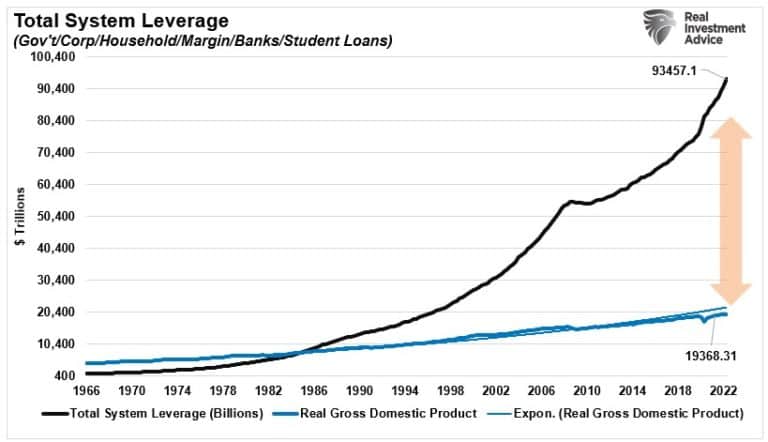
The problem comes if inflation remains elevated and interest rates adjust to higher levels. Such would trigger a debt crisis as servicing requirements increase and defaults rise. Historically, such events led to a recession at best and a financial crisis at worst.
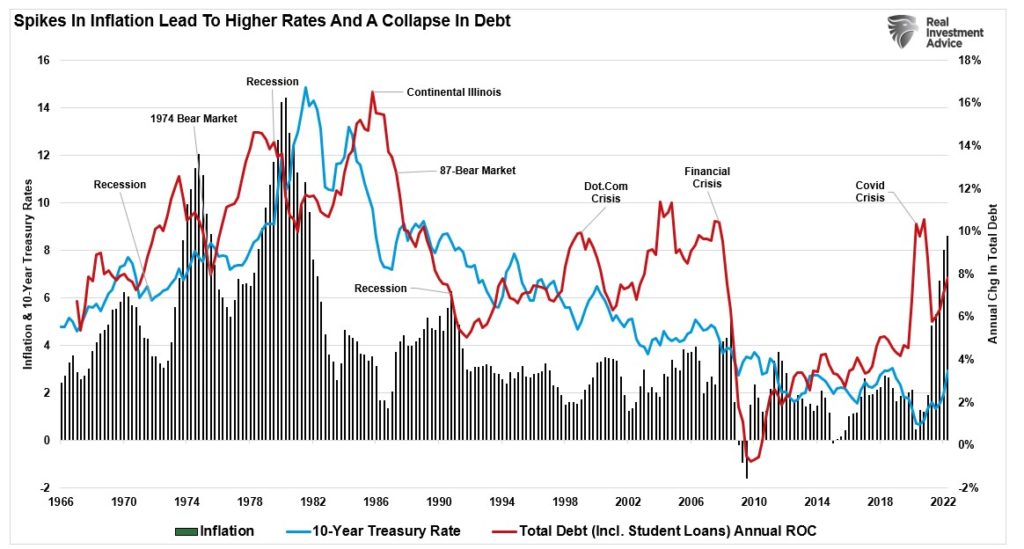
As Ron Insana recently stated;
“[Bullard’s] ‘7% solution’ is, in my view, completely and utterly absurd. Raising rates by up to three full percentage points from the Fed’s current target range of 3.75% to 4% would ensure a very deep recession. It would ensure that something somewhere breaks, risking a systemic market or economic event that will shake the financial markets or the economy to their very core.”
History suggests that such would indeed be the case.
Wash, Rinse & Repeat
The rise and fall of stock prices have little to do with the average American and their participation in the domestic economy. Interest rates are an entirely different matter. Since interest rates affect “payments,” increases in rates quickly negatively impact consumption, housing, and investment, which ultimately deters economic growth.
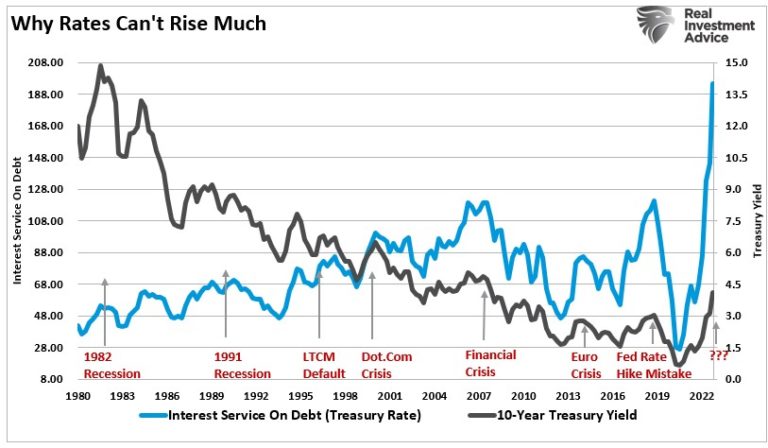
Given the already massive levels of outstanding debt and consumers now piling into credit card debt to offset spikes in living costs, the surge in rates will cause a reversion in consumption. Such will inevitably lead to a reversal of monetary policy, as seen repeatedly over the last decade, to offset the deflation of asset markets.
Of course, such leads to the repetitive cycle of Federal Reserve interventions.
- Monetary policy drags forward future consumption leaving a void in the future.
- Since monetary policy does not create self-sustaining economic growth, ever-larger amounts of liquidity are needed to maintain the same activity level.
- The filling of the “gap” between fundamentals and reality leads to economic contraction.
- Job losses rise, the wealth effect diminishes, and real wealth reduces.
- The middle class shrinks further.
- Central banks act to provide more liquidity to offset recessionary drag and restart economic growth by dragging forward future consumption.
- Wash, Rinse, Repeat.
If you don’t believe me, here is the evidence:
“Through the end of Q3-2022, using quarterly data, the stock market has returned almost 184% from the 2007 peak. Such is more than 6x GDP growth and 2.4x the increase in corporate revenue. (I have used SALES growth in the chart below as it is what happens at the top line of income statements and is not AS subject to manipulation.)“
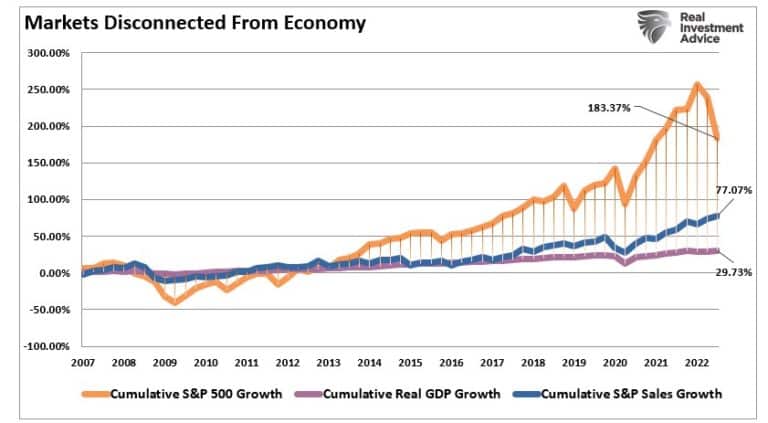
The critical takeaway is that while the Fed’s policy of low-interest rates pushed capital into the financial markets, it did so at the expense of economic growth. The debt accumulation needed to sustain a “living standard” has left the masses dependent on low rates to support economic activity.
Most likely, the Fed’s “7% solution” will solve the inflation problem caused by the massive stimulus injections following the pandemic. Unfortunately, the medicine will most likely kill the patient in the process.
